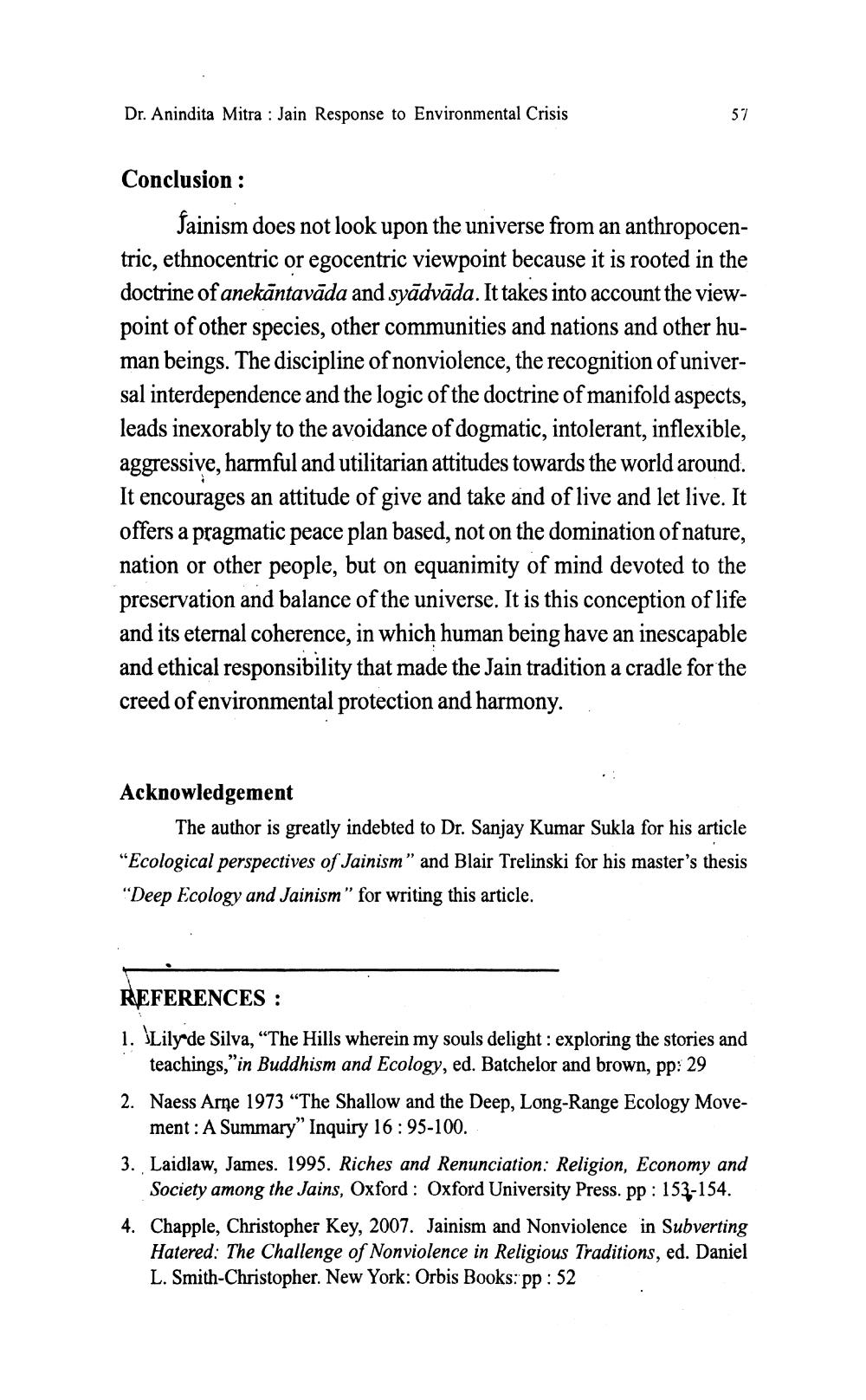________________
Dr. Anindita Mitra : Jain Response to Environmental Crisis
Conclusion :
Jainism does not look upon the universe from an anthropocentric, ethnocentric or egocentric viewpoint because it is rooted in the doctrine of anekāntavāda and syādvāda. It takes into account the viewpoint of other species, other communities and nations and other human beings. The discipline of nonviolence, the recognition of universal interdependence and the logic of the doctrine of manifold aspects, leads inexorably to the avoidance of dogmatic, intolerant, inflexible, aggressive, harmful and utilitarian attitudes towards the world around. It encourages an attitude of give and take and of live and let live. It offers a pragmatic peace plan based, not on the domination of nature, nation or other people, but on equanimity of mind devoted to the preservation and balance of the universe. It is this conception of life and its eternal coherence, in which human being have an inescapable and ethical responsibility that made the Jain tradition a cradle for the creed of environmental protection and harmony.
Acknowledgement
The author is greatly indebted to Dr. Sanjay Kumar Sukla for his article “Ecological perspectives of Jainism” and Blair Trelinski for his master's thesis "Deep Ecology and Jainism" for writing this article.
REFERENCES : 1. Lilyde Silva, “The Hills wherein my souls delight : exploring the stories and
teachings,"in Buddhism and Ecology, ed. Batchelor and brown, pp: 29
2. Naess Arne 1973 “The Shallow and the Deep, Long-Range Ecology Move
ment: A Summary” Inquiry 16:95-100. 3. Laidlaw, James. 1995. Riches and Renunciation: Religion, Economy and
Society among the Jains, Oxford: Oxford University Press. pp : 153-154. 4. Chapple, Christopher Key, 2007. Jainism and Nonviolence in Subverting
Hatered: The Challenge of Nonviolence in Religious Traditions, ed. Daniel L. Smith-Christopher. New York: Orbis Books: pp : 52




